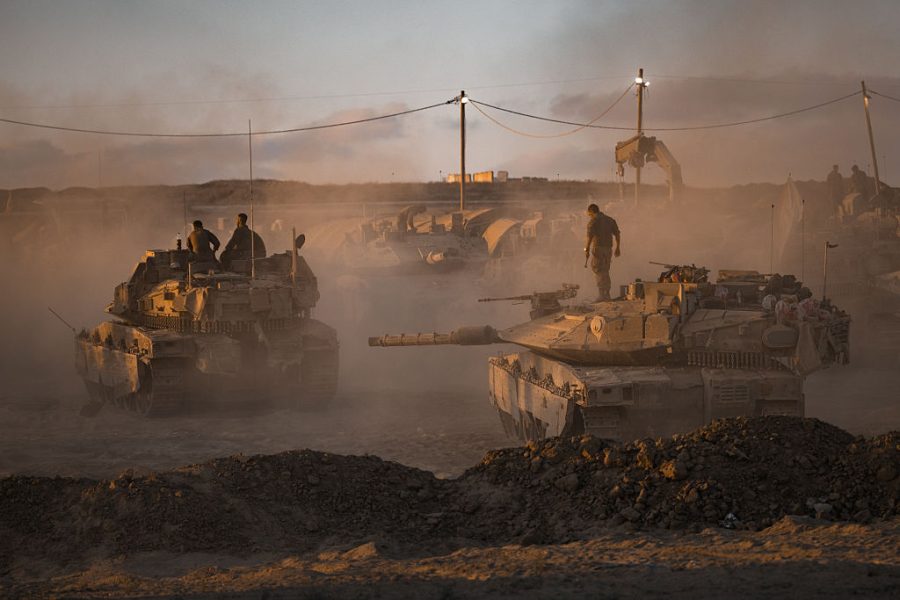Since the renewal of ground operations in March this year under the Southern Command, the Israeli Defence Forces (IDF) have entered a defining phase of their campaign in the Gaza Strip. Under the framework of Operation ‘Gideon’s Chariots’, Israeli troops have achieved what military officials describe as operational control over approximately 75 per cent of the territory. This advance has laid the foundation for the IDF’s current positioning on the outskirts of Gaza City and the launch of the next phase of the war: a concentrated assault on the remaining Hamas strongholds in the urban core.
There is an undercurrent of exhaustion across the Israeli public
The gains under Operation ‘Gideon’s Chariots’ are considerable. According to official briefings, five IDF divisions operated simultaneously across Gaza, dismantling dozens of terror tunnels, eliminating senior Hamas commanders, and striking roughly 10,000 targets using air and naval assets. Two strategic ground corridors – the ‘Morag’ and ‘Magen Oz’ corridors – were established, effectively bisecting key Hamas brigades and disrupting their operational coherence. High-profile eliminations included Mohammad Sinwar, head of Hamas’ military wing, and senior commanders of the Rafah and South Khan Yunis battalions. Much of this, of course, has barely been mentioned in Western media coverage, which instead focuses predominantly on partially manufactured or exaggerated crises relating to food supplies or civilian casualties. Many Western media outlets forget to report the actual military side of the war at all.
These developments culminated in the recent announcement that the IDF has entered phase two of Operation ‘Gideon’s Chariots’, targeting Gaza City itself. Troops from the Nahal and 7th Brigades, under the 99th Division, are now operating in the Zeitoun neighbourhood, while the Givati Brigade, part of the 162nd Division, advances in Jabaliya. The objective is unambiguous: to deepen the damage to Hamas’s remaining capabilities and sever the population’s dependence on the organisation. The IDF aims to dismantle the subterranean and surface-level infrastructure that has sustained Hamas’ operational endurance.
Yesterday, this intensified operational tempo was underscored by a thwarted Hamas infiltration attempt near a brigade post in southern Khan Yunis. According to IDF Spokesman Brigadier General Effie Defrin, more than fifteen armed terrorists emerged from a tunnel and launched an attack using small arms and RPGs. Nine were killed in the ensuing battle, which involved coordinated ground and air responses. One Israeli soldier was seriously wounded. The incident highlights both the remaining threat Hamas poses and the IDF’s ongoing efforts to pre-empt renewed attacks.
The IDF has simultaneously launched a large-scale humanitarian effort to facilitate the evacuation of civilians from combat zones. The Israeli government body COGAT is overseeing the adaptation of infrastructure in southern Gaza to accommodate displaced persons, and new aid distribution centres are being established. All the while, Israel has cooperated with Egyptian authorities to provide a Saudi-sponsored desalinated water main into the southern part of the Strip. Officials have reaffirmed the commitment to providing advance warnings to civilians and maintaining humanitarian corridors.
As part of preparations for sustained operations, the IDF has announced that approximately 60,000 reserve orders will be issued at the start of September, with an additional 20,000 service extensions for reservists already in the field. These reinforcements are intended to support the next wave of active duty formations, ensuring the IDF can maintain pressure without overextending its core fighting units.
Yet even as the operational achievements mount, there is an undercurrent of exhaustion across the Israeli public. Nearly two years into the war, the national mood has shifted from initial mobilisation to weary endurance. The IDF’s soldiers, drawn heavily from reservist ranks, are straining under repeated deployments. Families bear the burden of separation, uncertainty and loss. The sense of patriotic duty, while intact, now coexists with fatigue.
The IDF acknowledged this reality in its press briefings, noting the importance of balancing the demands placed on both active duty and reserve troops. But the greater challenge may lie not in achieving battlefield victories, but in defining what victory means to a population that has endured so much. Hamas has been degraded, its leadership decimated, its infrastructure compromised. Yet the return of all hostages remains elusive, and full security restoration across the border communities is not guaranteed. It seems increasingly likely the Gaza City offensive will go ahead, but even now the possibility of negotiations still hangs in the air, with Hamas suddenly motivated to engage thanks to the impending advance of the IDF.
This war has already reshaped the Israeli ethos. It has erased the illusion of invulnerability, reignited national solidarity, and redefined the stakes of regional security. However long the operations in Gaza City take, and whatever their tactical outcomes, the strategic impact is already being etched into the consciousness of a generation. Victory could still be several months of war away. When declared, it may not be a jubilant celebration but a hard-earned exhale – a solemn recognition of what was lost, what was endured, and what remains to be rebuilt.








Comments